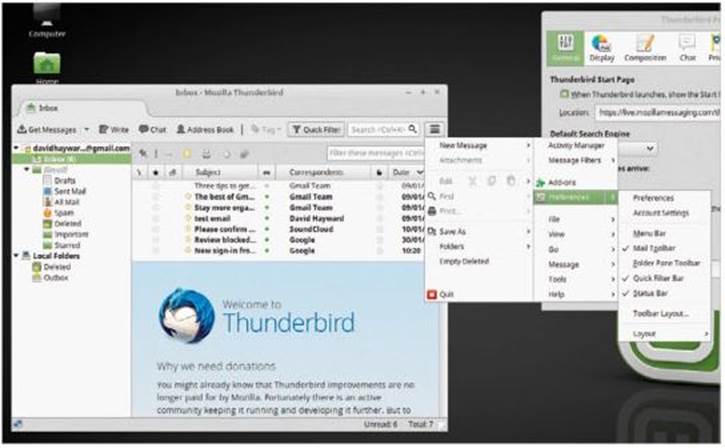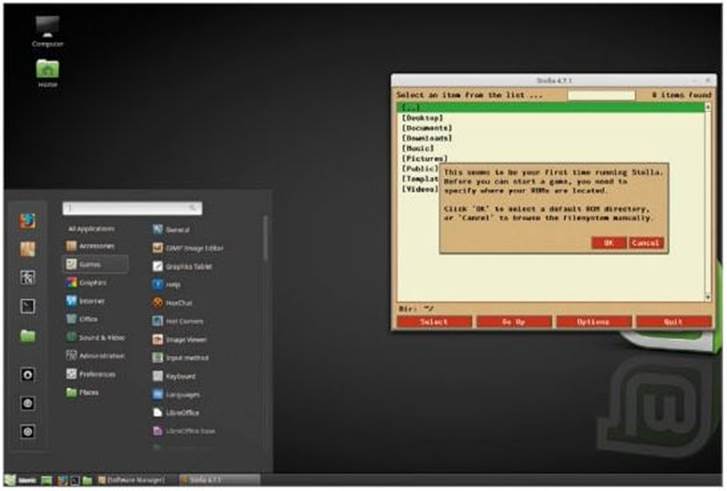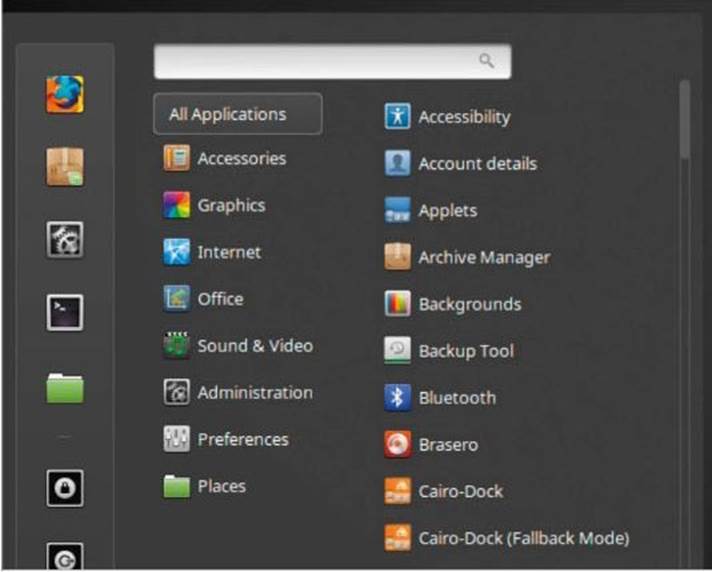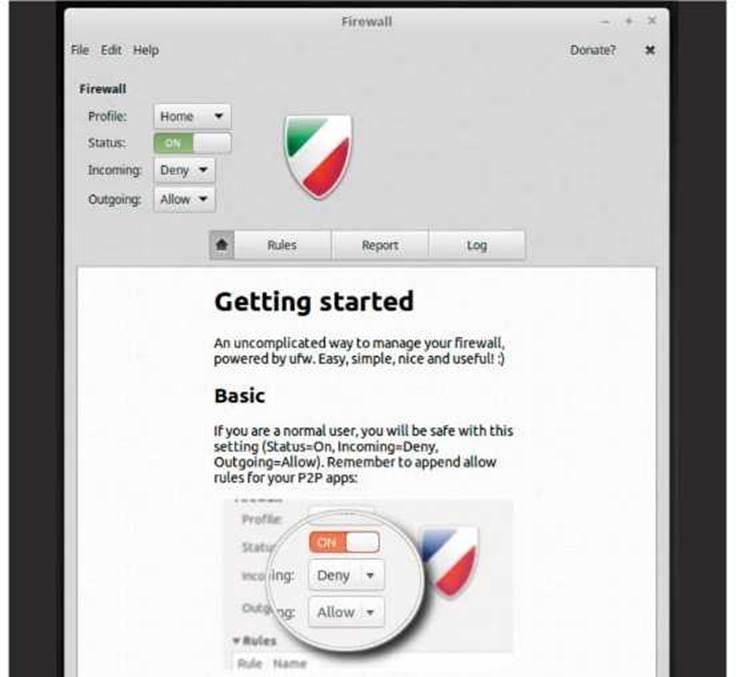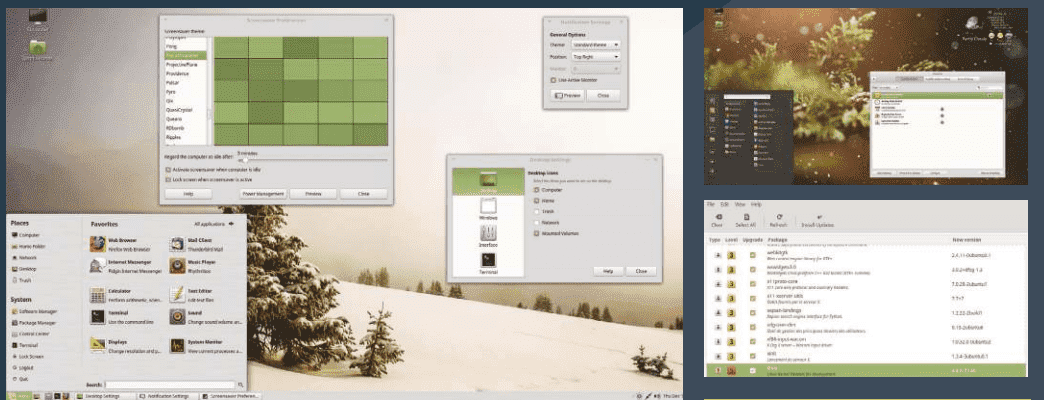
Paul O’Briendelves into Linux Mint’s development; how it’s grown to be used by millions of people and what’s new for the community-led distro
Linux Mint might not get a whole host of column inches compared to the distributions it’s based on (Ubuntu, and therefore Debian), but with millions of users it’s one of the most popular available.
Linux Mint started life back in August 2006, with version 1.0 (code-named ‘Ada’) taking the form of a quick experimental distro containing feature ideas that founder Clem Lefebvre had discussed in online reviews. The experiment was well received, with new users offering up a number of feature requests to augment Clem’s own ideas and improvements. By the time version 2.2 ‘Bianca’ landed in February 2007, the project had gained significant traction and it was clear that its aspirations should be that Mint would compete with the very best distros available.

Above The MATE desktop is a traditional, but good-looking desktop environment Top right Mint Desklets are applets that live on your desktop Above right The Linux Mint update manager is one of the best out there.PNG
The reason that Linux Mint grew hugely in popularity right from day one was that the development team listened to its loyal community from the start and continued to do so through a period of frequent releases and huge growth (the same community-focused mantra applies to this day). A crucial point in the history of Mint came with the release of GNOME 3.
The team were initially unsure as to the future of the distro as the GNOME update did not align with Mint’s goals.
The team ultimately chose to fork GNOME Shell to create Cinnamon, an alternate desktop environment that, while not requiring GNOME itself to be installed, stays true to the interface features the users liked in GNOME Shell. The stated purpose of Linux Mint is to produce a ‘modern, elegant and comfortable operating system which is both powerful and easy to use’. As a ready-to-use distro, Mint is second to none.
New developments in Mint 18.2
• Better Bluetooth
Bluetooth support is much improved in 18.2 with the addition of the Blueberry UI.
• New display manager
Mint 18.2 ditches MDM and uses LightDM as the display manager with support for X, Wayland and more.
• Slick greeter
18.2 includes the LightDM-powered, HiDPIready ‘Slick’ greeter, a fork of Unity greeter.
• Mint-Y polish
Mint 18 introduced the new Mint-Y, Arcbased theme; 18.2 adds further visual polish and new backgrounds.
• Updated environments
Cinnamon is updated to version 3.4, MATE to 1.18, KDE to Plasma 5.8.7, Xfce to 4.12.
• Linux kernel options
Kernel versions 4.6, 4.8 and 4.10 are available directly from the Mint Update kernel management utility.
It’s bundled with full multimedia support including proprietary codecs for Flash, MP3 and DVD playback. Although contentious among some in the Linux community, it does provide for an optimum user experience. A wide range of apps are included as standard in the spirit of being ready to go out of the box, including LibreOffice, Firefox, Thunderbird, VLC and GIMP.
Mint is often considered a good Linux distribution for new Windows converts, particularly when using the Cinnamon desktop environment, and this is further strengthened by the inclusion of Wine, the Windows compatibility layer, by default.
‘Mint4win’ allows Linux Mint to be installed directly from Windows, just as the ‘Wubi’ equivalent does on Ubuntu. This is a particularly useful tool as it requires no re-partitioning of the main system drive.
As Linux Mint is based on Debian and Ubuntu, it provides over 30,000 packages as well as one of the best software managers available. Reliability is noteworthy thanks to a conservative approach to software updates and a unique Update Manager also known as ‘mintUpdate’, which is part of the ‘MintTools’ suite. The update manager is designed to prevent inexperienced users from installing updates that are unnecessary or require a certain level of technical knowledge to install by assigning updates a safety level (from 1 to 5), based on the stability and necessity of the update.
Also included in MintTools is mintInstall, a software manager to install .mint files or packages from the Ubuntu and GetDeb repositories. Other historically included tools are mintMenu, a handy system-wide menu; mintBackup, a backup tool; mintUpload, an upload manager; mintNanny, a basic parental control tool; mintDesktop, a desktop config tool; and mintWelcome, the floating welcome screen.
The first version 18.x release of Linux Mint was a significant milestone in the distribution’s life. The underlying base was updated to Ubuntu 16.04 LTS, while the Cinnamon and MATE desktops in particular were refined – following an evolutionary path rather than opting for radical change, providing some welcome stability in a world where, for Ubuntu in particular, turbulence now dominates as the distro makes the switch away from Unity. Looking back to Linux Mint’s roots, installation, use and stability are better than ever, providing a welcome experience for users making the leap from Windows. The new Mint-Y theme was first previewed with the ‘Sarah’ release, before being tuned and refined based on user feedback (of course, this isMint!).
What’s new in Cinnamon 3.4
Cinnamon 3.4 was released in May this year and has now made its way to the latest Linux Mint release (it can also be installed on other distros). Although primarily a bug fix and performance release, the new version adds a number of new features including a desktop grid; multi-process improvements; wildcard support in file search; desktop actions in panel launcher; additional screensaver config options; better configuration of mice acceleration and sensitivity; and manage-systemdunits and lightdm-settings support in system settings (important as Mint 18.2 moves to LightDM). A new website – https://cinnamon-spices.linuxmint.com is available for Spices: themes, applets, desklets and extensions for Cinnamon.
Nearly 300 are currently available, allowing extensive customisation of the Cinnamon experience.
The update story once again received major updates for version 18. For shell lovers, the aptcommand gained compatibility with the Debian tool of the same name. On the GUI side, Update Manager enjoyed some big improvements, with a choice of three broad settings for updates: the safe option, to offer only stable updates; the default option, which installs stable updates but also offers updates that could affect stability; and the ‘throw caution to the wind and update everything’ option, if you’re not scared of breaking things. The kernel update utility in Mint is a real highlight, eclipsing anything on offer from other distributions, allowing you to easily install and test newer kernels.
Linux Mint 18.1 ‘Serena’ represented a small update to the original release.
Cinnamon 3.2 added yet further polish, the included X-apps received small UI tweaks and – you guessed it – software update and installation were also refined. That the login screen display manager, MDM, received some of the most notable technical improvements speaks volumes.
July 2017 sees the release of Linux Mint 18.2 ‘Sonya’, a long-term support release which will be supported until 2021. Mint 18.2 is available with Cinnamon, MATE, KDE or Xfce desktop environments and is once again based on Ubuntu 16.04.
Linux Mint 18.2 ‘Sonya’ includes a number of new features and improvements in the base system, as well as additional changes within each supported desktop environment. For regular Bluetooth users, the new Blueberry user interface is a huge boon. Aside from the vastly improved user interface, Blueberry adds a stack switcher, support for OBEX file transfers out of the box (enabling you to easily send files to your computer from a Bluetooth device such as a phone or tablet) and an option to change the Bluetooth name of your computer.
A lot of work has been put into the included X-apps for the latest release.
Xed, the text editor, has had significant improvements to its user interface. Smart side and bottom bars, a dark theme, line sorting, keyboard and mouse-driven zoom, regex search, simplified tab switching and improved word wrap accessibility alos feature, making the application more powerful than ever before. Xplayer, the media player, has also received improvements to its user interface. The UI is more compact thanks to the playback controls and seek bar being placed on the same line and the status bar being removed. Keyboard shortcuts are improved and extended and, as in Xed, the ability to favour dark themes has been added. The previously somewhat buggy on-screen display is fixed, too. Improved keyboard shortcuts are now included in the Pix image utility, which also receives a little visual polish. The Xreader PDF tool has undergone a more extensive redesign and also gains touchscreen support, particularly useful if you’re using Mint on a convertible machine – you’ll now be able to swipe your finger across the screen to quickly browse through pages and even pinch to zoom in or out.
The update to Cinnamon 3.4 for the latest release is accompanied by a rewrittenfrom-scratch Cinnamon Spices website.
The goal of the rewrite was much more than a simple cosmetic overhaul – the project focused both on improved security and a drive to guarantee better quality and compatibility than ever before. This does mean that some Spices were removed and many were updated to bring them up to a suitable level for their new home. It’s easy to understand the motivation behind the effort. The quality of Spices, as with extensions for GNOME, plays a significant role in how Cinnamon as a whole is perceived. Progress towards the stated goal of a world where everything ‘just works’ is a step closer with this release.
The MATE release of Linux Mint 18.2 features version 1.18 of the MATE desktop, which, after six months of work, finally completes the migration to GTK3+. Yes, the entire suite of applications and components are now GTK3+ only! Other improvements in the new MATE release include libinput support; much improved accessibility; updates to the Caja file manager; an upgraded MATE panel; additional format support in the Engrampa archive manager and the return of the MATE Calculator! The Xfce flavour of Linux Mint has more minor updates this time round, primarily limited to an updated version of the Whisker application launcher menu and an upgrade to the xfwm4 window manager, which brings Vsync support, cursor scaling on zoom and various other fixes and improvements.
Plasma 5.8 makes its debut in the KDE release of Sonya. Marking the first release of Plasma with LTS support, 5.8 features an all-new login and lock screen designed to match the look and feel of the main KDE experience. Wallpaper plug-ins can now be shown on the lockscreen for the first time. KDE’s applets have been updated to improve their efficiency. Plasma Discover (the ‘KDE Software Store’) has been overhauled, multi-screen support is enhanced and RTL language support is significantly extended.
As well as receiving security updates until 2021 as a LTS release, until 2018 future versions of Linux Mint will use the same package base as version 18.x, simplifying the upgrade process.
How mainstream is Mint? Well, as you may be aware, Linux has had something of a starring role in the hit TV show Mr. Robot.
Characters have discussed GNOME vs KDE, GNOME 2 and Kali Linux have put in an appearance – Season 3 is set to feature Linux Mint. Keep an eye out!
MintBox machines
A close partnership between Compulab and the Linux Mint team has produced a line of miniature PCs that come ready to use with Mint pre-installed. Based on Compulab’s fitlet mini-PCs, three different Mintbox variants are available – the high-end Intel i5-powered MintBox 2, the mid-range AMD A10-powered MintBox Mini Pro and the lower-end AMD A4-based MintBox Mini. Although sold at a relatively high prices, the machines have been well received due to their pocketable size, completely fanless running, good performance and – of course – excellent hardware compatibility with Linux Mint

